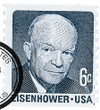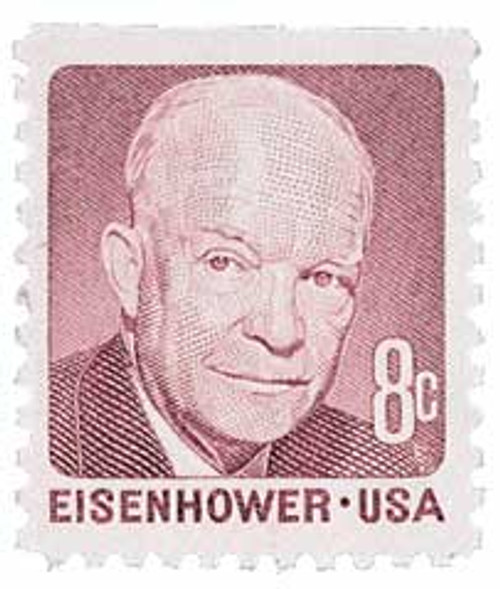
# 1401 - 1970 6c Dwight D. Eisenhower, blue grey
Coil Stamp
Birth of Mamie Eisenhower
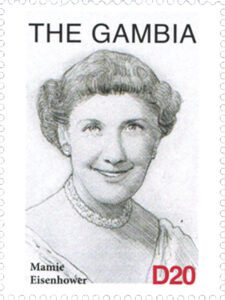
First Lady Mamie Geneva Doud Eisenhower was born on November 14, 1896, in Boone, Iowa. Mrs. Eisenhower was known for her stylish dresses, frugality, and love of entertaining. But she also spoke out in support of important causes, including heart health and the well-being of military widows.
The Doud family moved several times throughout Mamie’s childhood, and her high school years were split between Colorado and Texas. Though Mamie’s family was well-off, her businessman father taught her the value of money from an early age. She became known for her thriftiness and had a real talent for budget and finance.
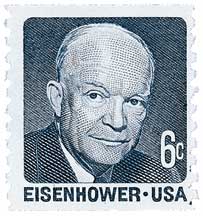
After attending finishing school while her family wintered in Texas, Mamie met Dwight Eisenhower in October 1915. They were married the following July before Mamie moved into Dwight’s living quarters at Fort Sam Houston in Texas.
As a rising star in the Army, Dwight was frequently promoted and sent to posts in Panama, Paris, and the Philippines. Mamie was determined to make every one of the 33 homes she and Dwight lived in during this time as comfortable as possible. While her husband served, Mamie kept herself busy entertaining the other military wives and working in the community. While in Panama, she helped create a free hospital for local women who were not allowed to use the Army hospital.
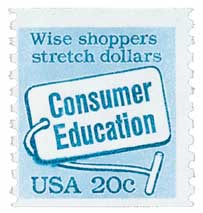
During World War II, Mamie did not see her husband for nearly three years as he led Allied troops across Europe. Without an office or staff, Mamie received thousands of letters and answered as many as she could. She also spent time as a volunteer waitress in an Army canteen.
When the war was over, Dwight worked as both president of Columbia University and commander of NATO, so Mamie established homes for them in both New York City and Paris. When Dwight entered the 1952 presidential race, Mamie became a celebrity in her own right, appealing to women voters with “Mamie for First Lady,” “We Want Mamie,” and “I Like Mamie Too” buttons. She also made appearances along the campaign trail and suggested edits to Dwight’s speeches, making them simpler and more understandable. Dwight and Mamie proved a popular pair and won the election by a landslide.
Mamie had little interest in politics but gladly embraced the hostess aspect of the office of first lady. She had plenty of experience in managing a large staff from Dwight’s military years. She expected nothing less than perfection from the household staff, but was also exceptionally kind to them, ordering fancy cakes for every one of their birthdays.
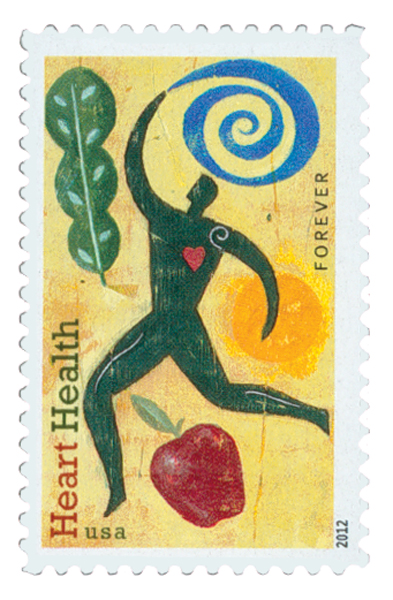
When Dwight suffered a heart attack in 1955, Mamie stayed at his side caring for him. As he recuperated, she limited his visitors, schedule, and diet. She also answered his mail, personally responding to citizens and world leaders. Mamie did these same duties the following year after Dwight needed an emergency operation. Dwight’s heart attack inspired Mamie to begin fundraising and awareness campaigns for the American Heart Association.
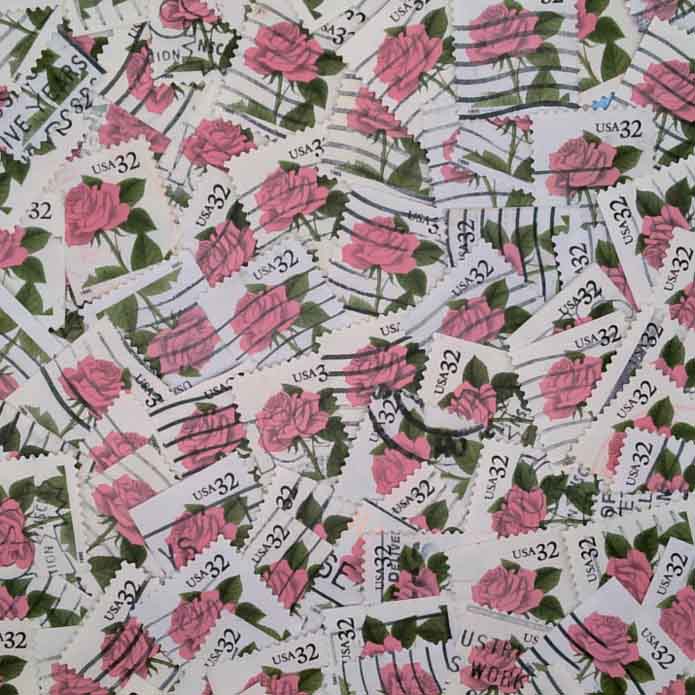
During her time in the White House, Mamie received tens of thousands of letters and believed that each person that took the time to write her deserved a response. Though she now had an office of people that helped her write letters back, she personally signed every one. When some of these letters had recommendations that she supported, Mamie passed them on to her husband’s staff. Some of these included military housing, enlistment deferments, and civil service employment. Near the end of her time as first lady, Mamie helped raise funds for the Army Distaff Home, which offered housing and healthcare to Army widows. This eventually became known as Knollwood when it opened in 1962.
After their two terms in the White House were over, the Eisenhowers traveled Europe before retiring to their farm in Gettysburg, Pennsylvania. They continued to have an active social schedule and Mamie served as co-chair of the National Cultural Center. After Dwight died in 1969, Mamie remained busy until her death on November 1, 1979.
Coil Stamp
Birth of Mamie Eisenhower

First Lady Mamie Geneva Doud Eisenhower was born on November 14, 1896, in Boone, Iowa. Mrs. Eisenhower was known for her stylish dresses, frugality, and love of entertaining. But she also spoke out in support of important causes, including heart health and the well-being of military widows.
The Doud family moved several times throughout Mamie’s childhood, and her high school years were split between Colorado and Texas. Though Mamie’s family was well-off, her businessman father taught her the value of money from an early age. She became known for her thriftiness and had a real talent for budget and finance.

After attending finishing school while her family wintered in Texas, Mamie met Dwight Eisenhower in October 1915. They were married the following July before Mamie moved into Dwight’s living quarters at Fort Sam Houston in Texas.
As a rising star in the Army, Dwight was frequently promoted and sent to posts in Panama, Paris, and the Philippines. Mamie was determined to make every one of the 33 homes she and Dwight lived in during this time as comfortable as possible. While her husband served, Mamie kept herself busy entertaining the other military wives and working in the community. While in Panama, she helped create a free hospital for local women who were not allowed to use the Army hospital.

During World War II, Mamie did not see her husband for nearly three years as he led Allied troops across Europe. Without an office or staff, Mamie received thousands of letters and answered as many as she could. She also spent time as a volunteer waitress in an Army canteen.
When the war was over, Dwight worked as both president of Columbia University and commander of NATO, so Mamie established homes for them in both New York City and Paris. When Dwight entered the 1952 presidential race, Mamie became a celebrity in her own right, appealing to women voters with “Mamie for First Lady,” “We Want Mamie,” and “I Like Mamie Too” buttons. She also made appearances along the campaign trail and suggested edits to Dwight’s speeches, making them simpler and more understandable. Dwight and Mamie proved a popular pair and won the election by a landslide.
Mamie had little interest in politics but gladly embraced the hostess aspect of the office of first lady. She had plenty of experience in managing a large staff from Dwight’s military years. She expected nothing less than perfection from the household staff, but was also exceptionally kind to them, ordering fancy cakes for every one of their birthdays.

When Dwight suffered a heart attack in 1955, Mamie stayed at his side caring for him. As he recuperated, she limited his visitors, schedule, and diet. She also answered his mail, personally responding to citizens and world leaders. Mamie did these same duties the following year after Dwight needed an emergency operation. Dwight’s heart attack inspired Mamie to begin fundraising and awareness campaigns for the American Heart Association.

During her time in the White House, Mamie received tens of thousands of letters and believed that each person that took the time to write her deserved a response. Though she now had an office of people that helped her write letters back, she personally signed every one. When some of these letters had recommendations that she supported, Mamie passed them on to her husband’s staff. Some of these included military housing, enlistment deferments, and civil service employment. Near the end of her time as first lady, Mamie helped raise funds for the Army Distaff Home, which offered housing and healthcare to Army widows. This eventually became known as Knollwood when it opened in 1962.
After their two terms in the White House were over, the Eisenhowers traveled Europe before retiring to their farm in Gettysburg, Pennsylvania. They continued to have an active social schedule and Mamie served as co-chair of the National Cultural Center. After Dwight died in 1969, Mamie remained busy until her death on November 1, 1979.








